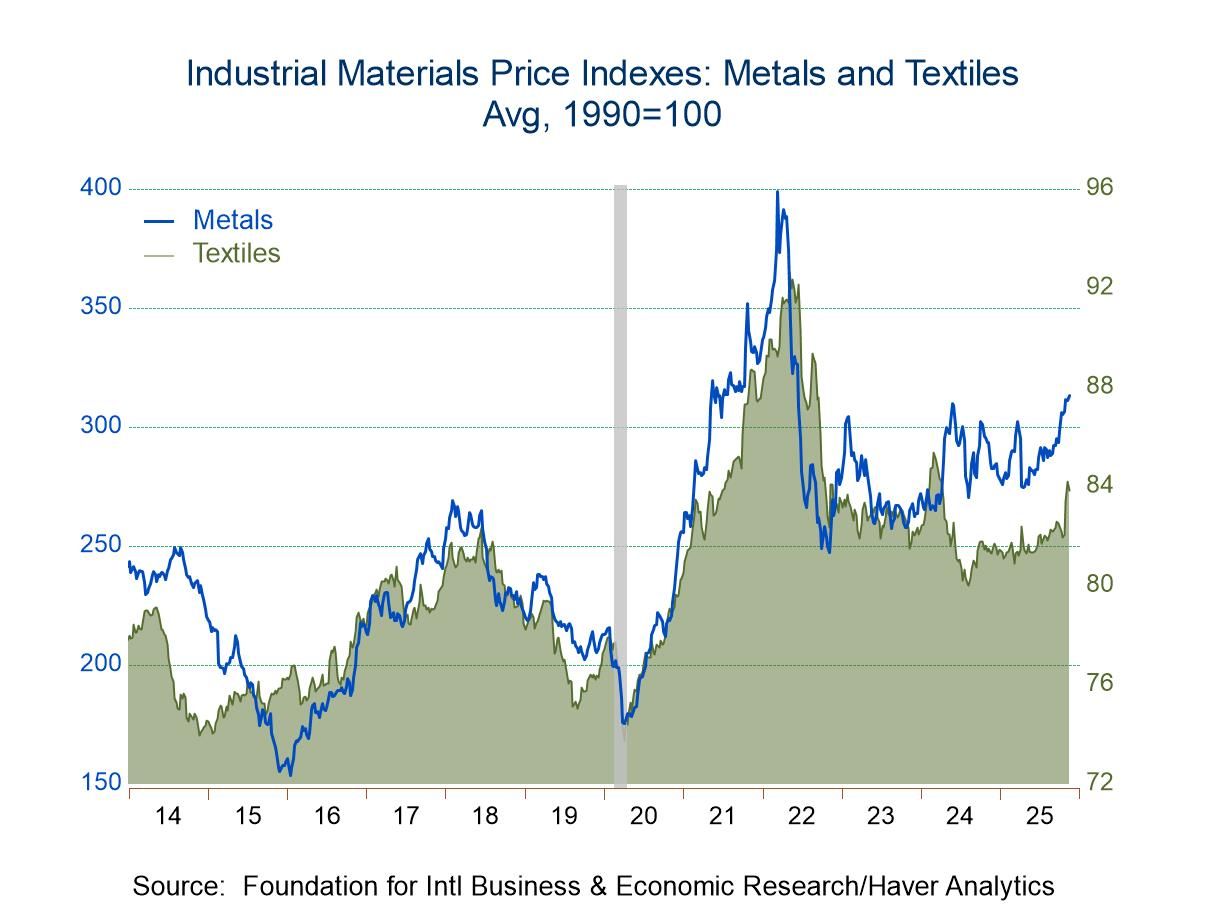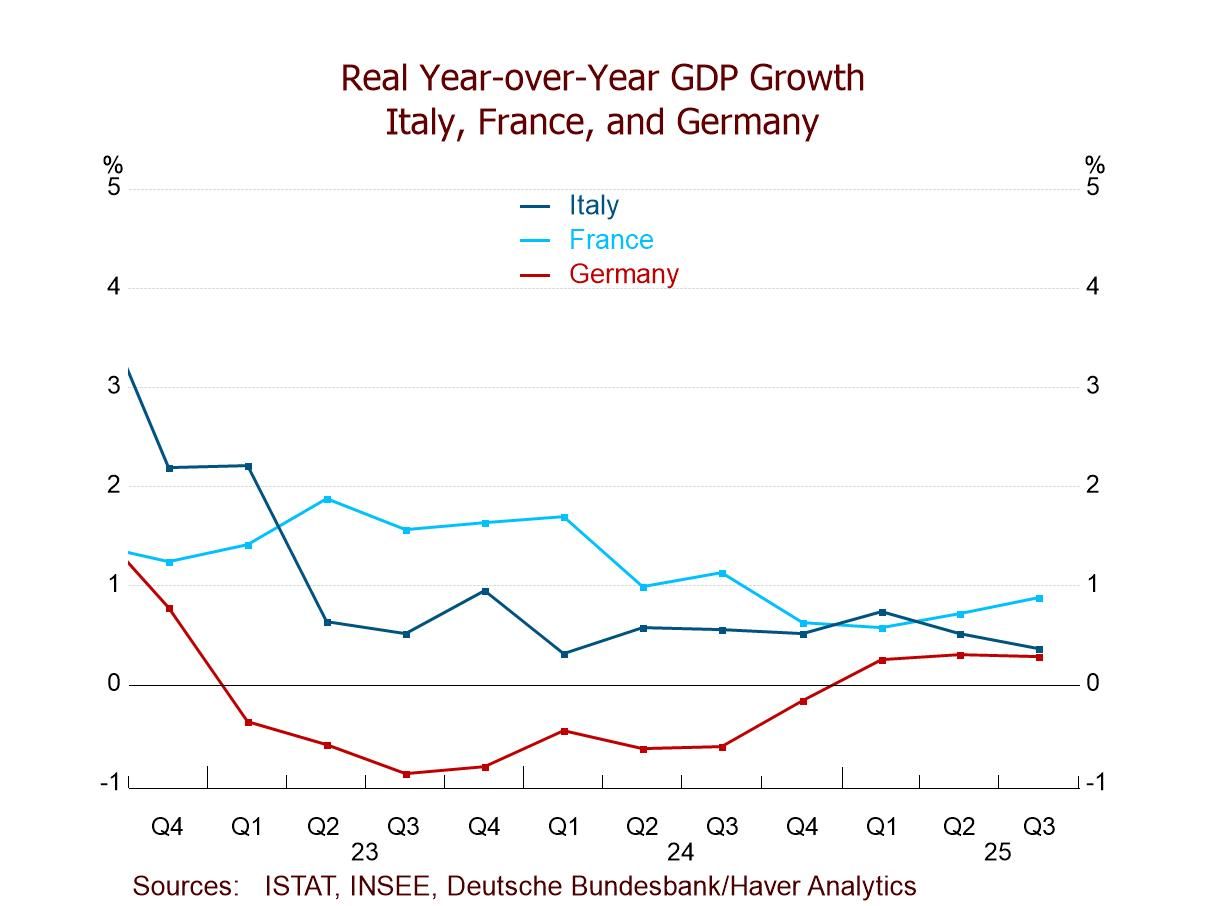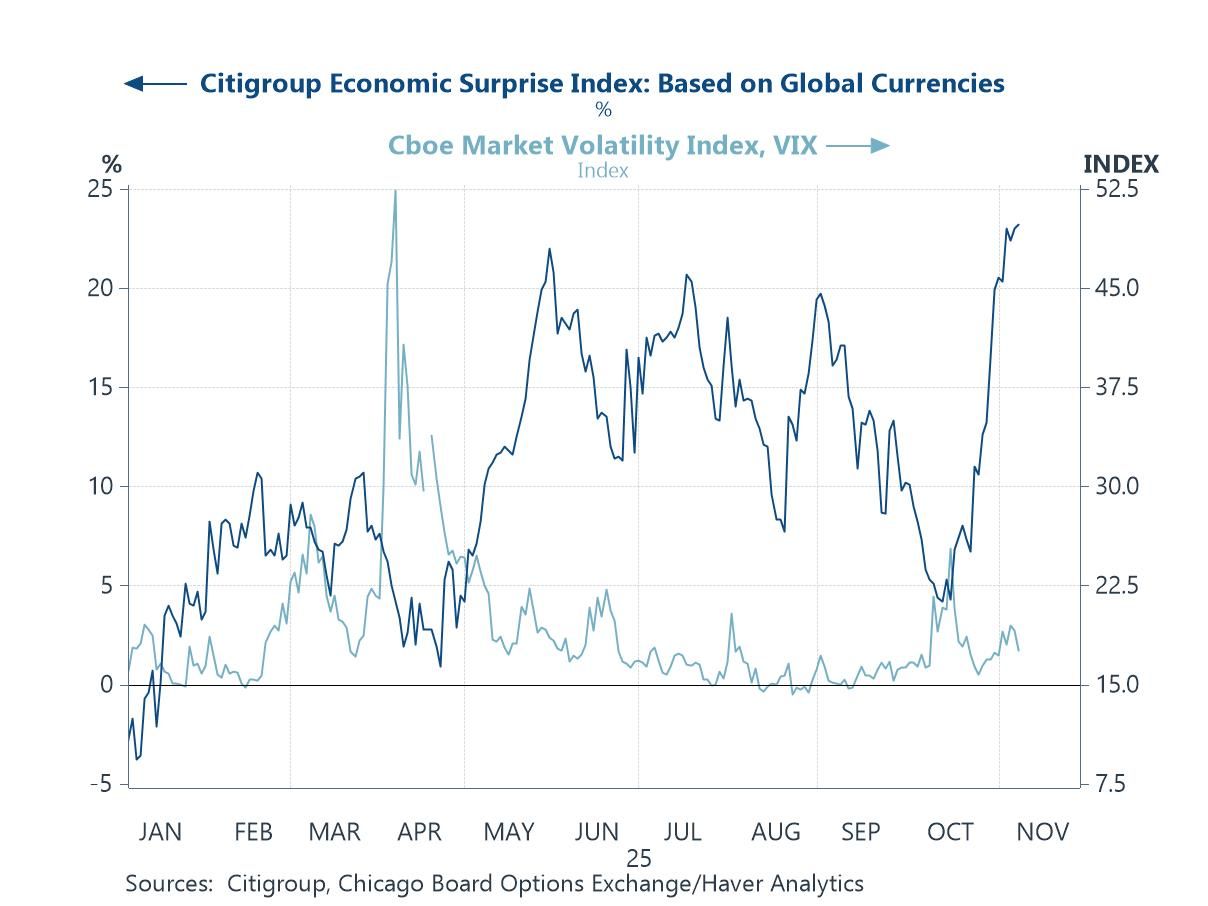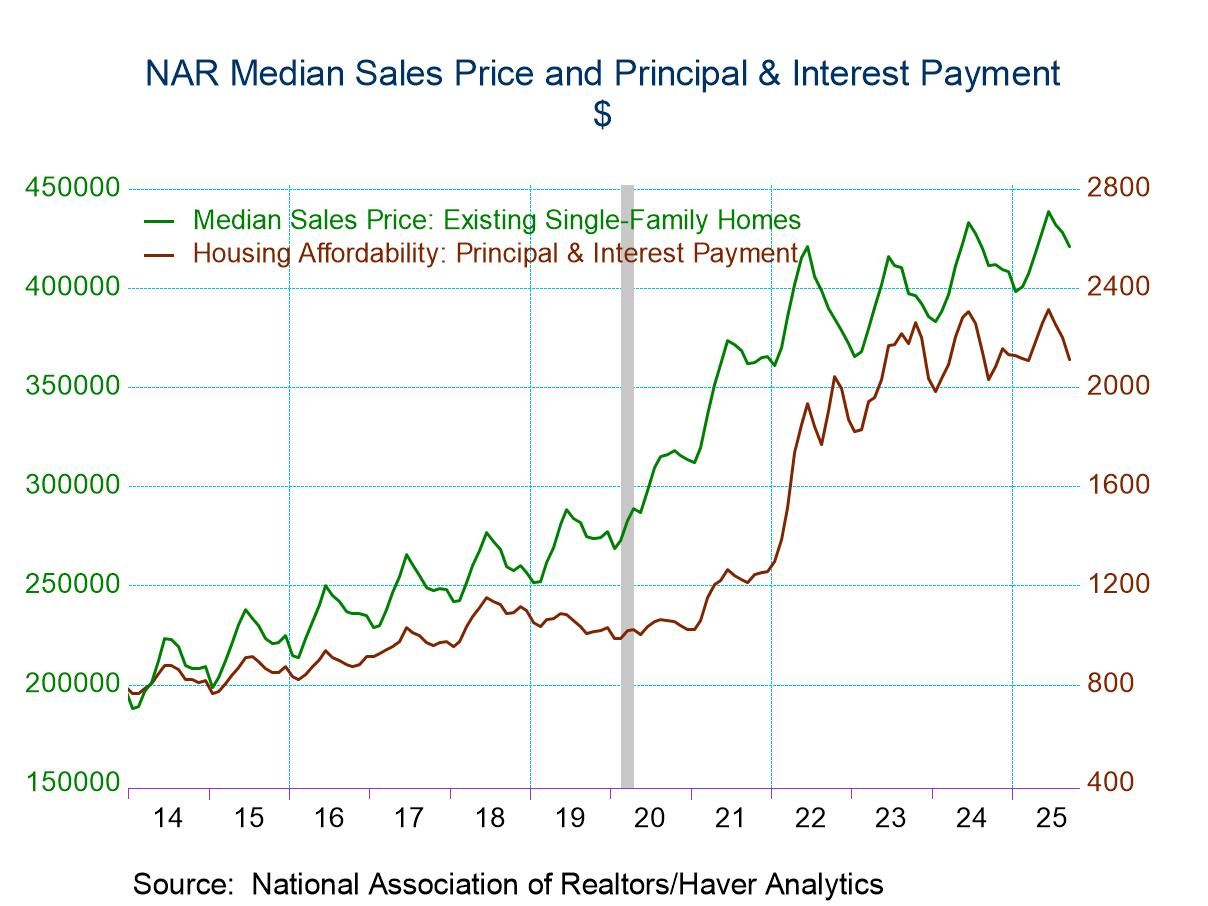Texas Manufacturing Activity Gains More Solid Footing in October; Expectations Jump
by:Tom Moeller
|in:Economy in Brief
Summary
- General business activity index has been rising since 2023 low.
- Production surges, shipments improve, but employment declines.
- Price reading eases, but wages & benefits improve.
- Future business index stands at highest point in three years.


The rate of decline in manufacturing activity in the Lone Star State continued to ease in October, according to the Texas Manufacturing Outlook Survey conducted by the Federal Reserve Bank of Dallas. The General Business Activity index increased to -3.0 in October from -9.0 in September. It was the highest level since April 2022, up from the most recent low of -19.4 in May. The October reading compared to a low of -30.1 in May 2023. Nevertheless, the index has been negative since May 2022. An increased 15.3% of respondents reported improved business activity in October while a fairly steady 18.3% of respondents reported a worsening. The company outlook index rose to -3.3 this month, up from a low of -18.4 in July. It’s been negative since March 2022. Data were collected between October 15 to 23 from 86 Texas manufacturers.
The production index in October surged to 14.6 from -3.2 in September, indicating the strongest net-production increase since May 2022. An increased 34.5% of respondents reported higher production this month while a lessened 19.9% reported a decline. Moving lower, the growth rate of orders index fell to -11.7, the sixth straight month of decline. It was down from its recent high of 3.8 in April and significantly below a peak of 30.4 in April 2021. The unfilled orders index was little-changed at -17.5 after plunging to -18.0 from +1.0 in August. It was well below a high of 6.2 in July 2022. The shipments index rose to 1.5 this month from -7.0 in July. The capacity utilization index strengthened to 4.3 from -7.0 in September, the first positive reading in six months. The delivery time index fell to -11.5 this month, the lowest reading since July of last year.
Labor market indexes deteriorated this month. The employment index fell to -5.1 after rising to 2.9 September. The latest reading remained well below a high of 18.2 in January 2023 and a record-high 32.0 in April 2021. A lessened 14.3% of respondents reported net hiring in October while a higher 19.4% reported net layoffs. The hours worked index was at -5.5 this month after m/m steadiness at -2.5 in September. It remained well below a high of 13.6 in August 2022 and a record-high 24.6 in April 2021. Moving up, the wages & benefits index rose to 23.5 in October, the highest level in four months, after falling to 18.5 in September.
Inflation indicators eased this month. The index for prices received for finished goods slipped to 7.4 in October from roughly 8.4 in both of the prior two months. It remained well below a high of 47.9 in March 2022. A lessened 11.1% of respondents reported raising prices in October while a lessened 3.7% reported lowering prices. The index of prices paid for raw materials dropped to 16.3 this month from 18.2 in September. The index remained up from a low of 1.1 in June 2023 but below 73.2 in March 2021.
Expectations of future manufacturing activity were greatly improved this month. The future general business activity index jumped to 29.6 in October from 11.4 in September. It was the highest reading in three years. The future employment index led the gain while future production also rose to a three-year high. Future shipments, new orders and hours worked also increased.
Each index is calculated by subtracting the percentage reporting a decrease in activity from the percentage reporting an increase. When all firms report rising activity, an index will register 100. An index will register -100 when all firms report a decrease. An index will be zero when the number of firms reporting an increase equals the number reporting a decrease. Data for the Texas Manufacturing Outlook, conducted by the Federal Reserve Bank of Dallas, can be found in Haver's SURVEYS database.


Tom Moeller
AuthorMore in Author Profile »Prior to joining Haver Analytics in 2000, Mr. Moeller worked as the Economist at Chancellor Capital Management from 1985 to 1999. There, he developed comprehensive economic forecasts and interpreted economic data for equity and fixed income portfolio managers. Also at Chancellor, Mr. Moeller worked as an equity analyst and was responsible for researching and rating companies in the economically sensitive automobile and housing industries for investment in Chancellor’s equity portfolio. Prior to joining Chancellor, Mr. Moeller was an Economist at Citibank from 1979 to 1984. He also analyzed pricing behavior in the metals industry for the Council on Wage and Price Stability in Washington, D.C. In 1999, Mr. Moeller received the award for most accurate forecast from the Forecasters' Club of New York. From 1990 to 1992 he was President of the New York Association for Business Economists. Mr. Moeller earned an M.B.A. in Finance from Fordham University, where he graduated in 1987. He holds a Bachelor of Arts in Economics from George Washington University.






 Global
Global